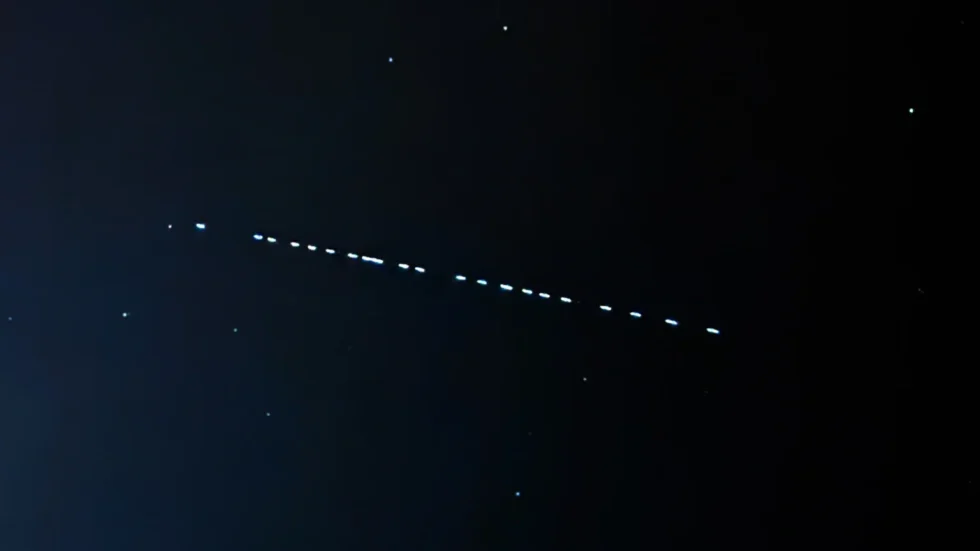Burning Starlink satellites over North America: Astronomers warn of a new space traffic crisis

In recent weeks, the night skies above California and Canada have become the stage for a striking phenomenon. Spectators reported fiery streaks resembling meteor showers, but these glowing trails were not natural at all — they were Starlink satellites disintegrating as they reentered Earth’s atmosphere. Controlled burn-ups of these low-orbit devices are now occurring daily, marking a new phase in the story of space expansion, reports G.Business.
Up to five satellites burn up daily
Astrophysicist Jonathan McDowell, a researcher and former Harvard astronomer known for Jonathan’s Space Report, has documented an increasing number of Starlink reentries. He estimates that up to five satellites per day could soon be reentering the atmosphere. According to the monitoring platform EarthSky, one to two burn-ups currently occur daily — and the frequency continues to rise sharply.
The reason is simple: the low-Earth orbit (LEO) region is becoming dangerously crowded. With more than 8,500 Starlink satellites already launched by SpaceX and thousands more planned, the skies around Earth are filling faster than any regulatory system can adapt.
A crowded orbit and growing competition
The competition for orbital slots is intensifying. Besides Starlink, other massive networks like Amazon Kuiper, OneWeb, and upcoming Chinese and European constellations are expanding aggressively. Experts warn that by 2030, more than 50,000 active satellites could orbit the planet simultaneously.
This unprecedented density increases the risk of collisions and chain reactions known as the Kessler Syndrome, where debris from one crash creates a cascade of further impacts. Scientists are calling this situation “orbital overpopulation” — a term that reflects not only congestion but also the lack of global governance for private satellite systems.
A planned but risky life cycle
Starlink satellites are designed with a five-year lifespan. Once they reach the end of their operational phase, they lose propulsion and are intentionally directed toward the atmosphere to fully disintegrate on reentry. This system aims to minimize long-term space junk. However, with tens of thousands of new launches, the volume of atmospheric reentrieswill inevitably increase. Even though most debris vaporizes completely, fragments may occasionally survive and fall into remote areas of the ocean or uninhabited land.
Solar activity accelerating decay
Another factor behind the growing number of reentries is increased solar activity. During strong solar storms, the upper layers of Earth’s atmosphere expand and become denser. This raises drag on satellites, forcing them to lose altitude faster. Several Starlink units that were still functional have already been pushed prematurely out of orbit during recent solar flares — a process that SpaceX engineers describe as “unpredictable but natural.”
What this means for the future of orbit
Experts caution that the combination of satellite proliferation and solar variability could make orbital management one of the defining challenges of the next decade. Each year, thousands of satellites will burn up upon reentry, creating a new kind of luminous pollution — visible even to the naked eye.
Although SpaceX maintains that all its satellites comply with international safety standards, scientists urge the adoption of binding global rules for deorbiting and satellite lifespan control. Without coordinated oversight, the era of mass orbital expansion may lead to the first-ever “traffic crisis” in space — one visible from Earth not through telescopes, but through fiery trails across the night sky.
Stay connected for news that works — timely, factual, and free from opinion — and insights that matter now: Legal Prostitution in Europe and Germany: Principles, Locations, and Practice